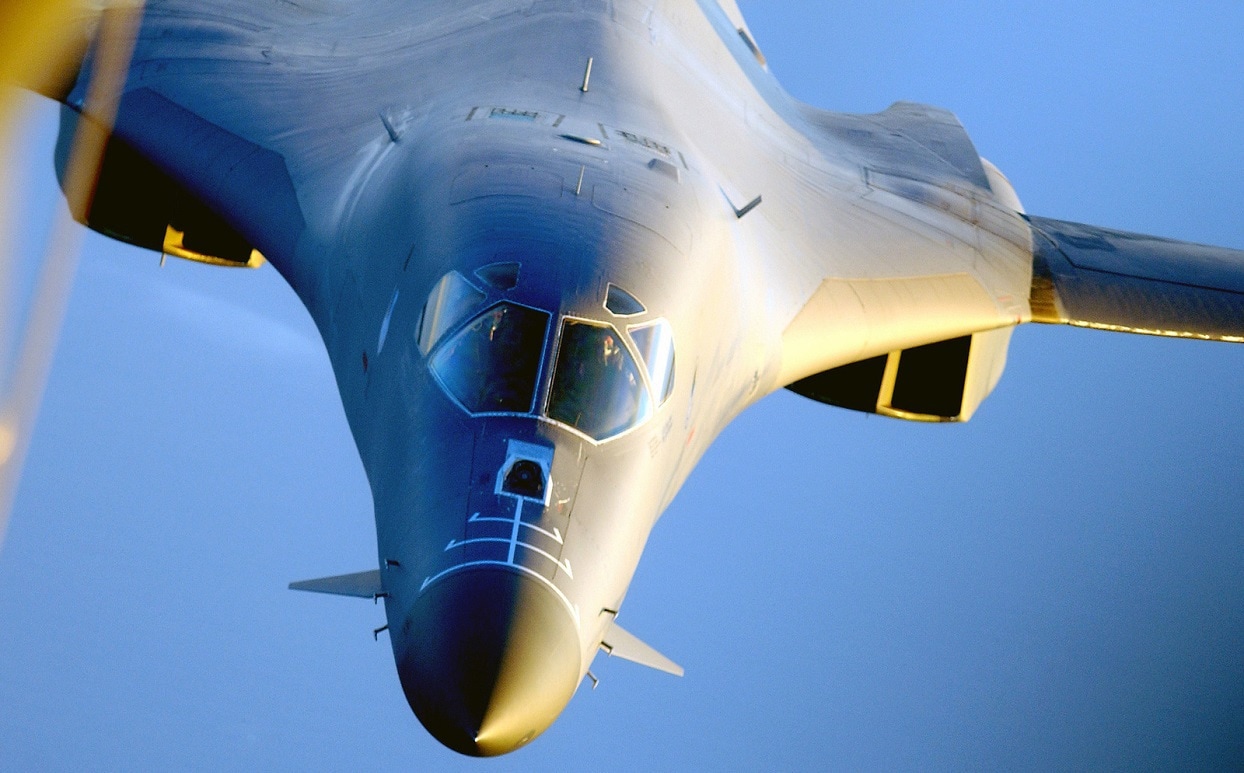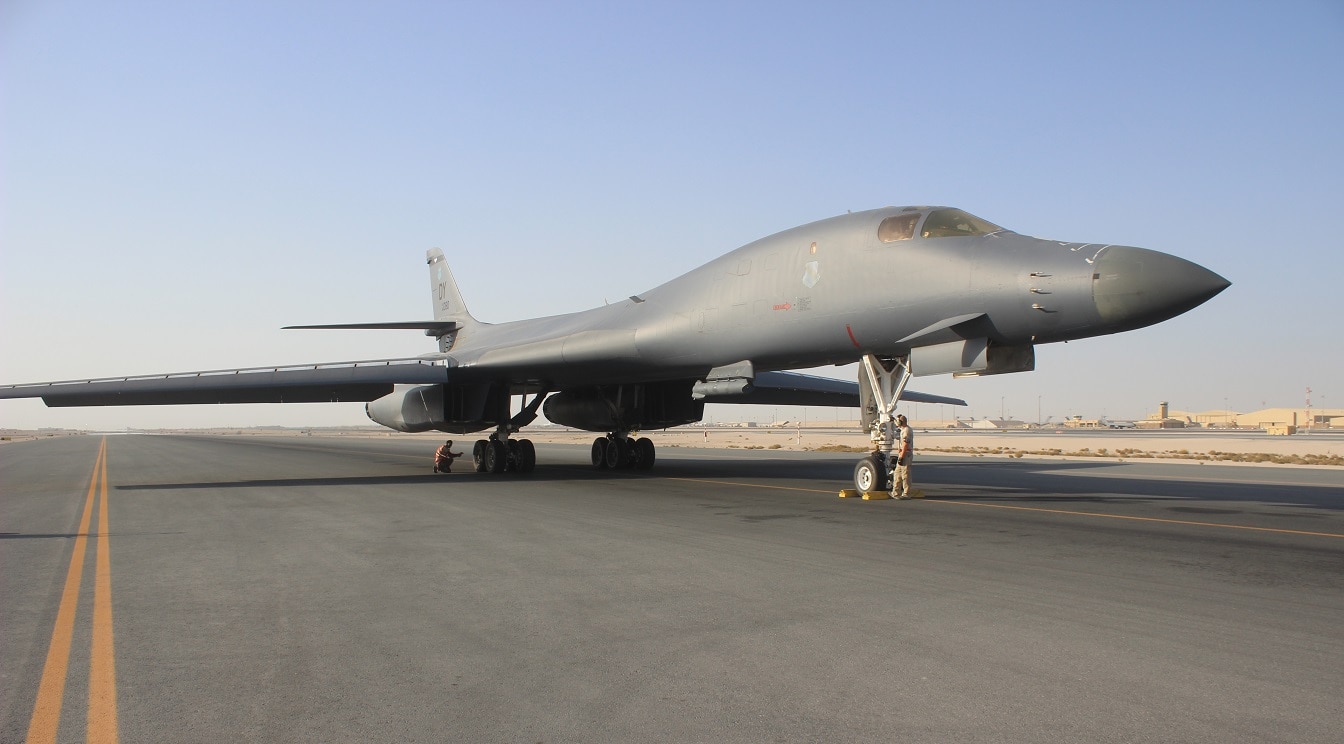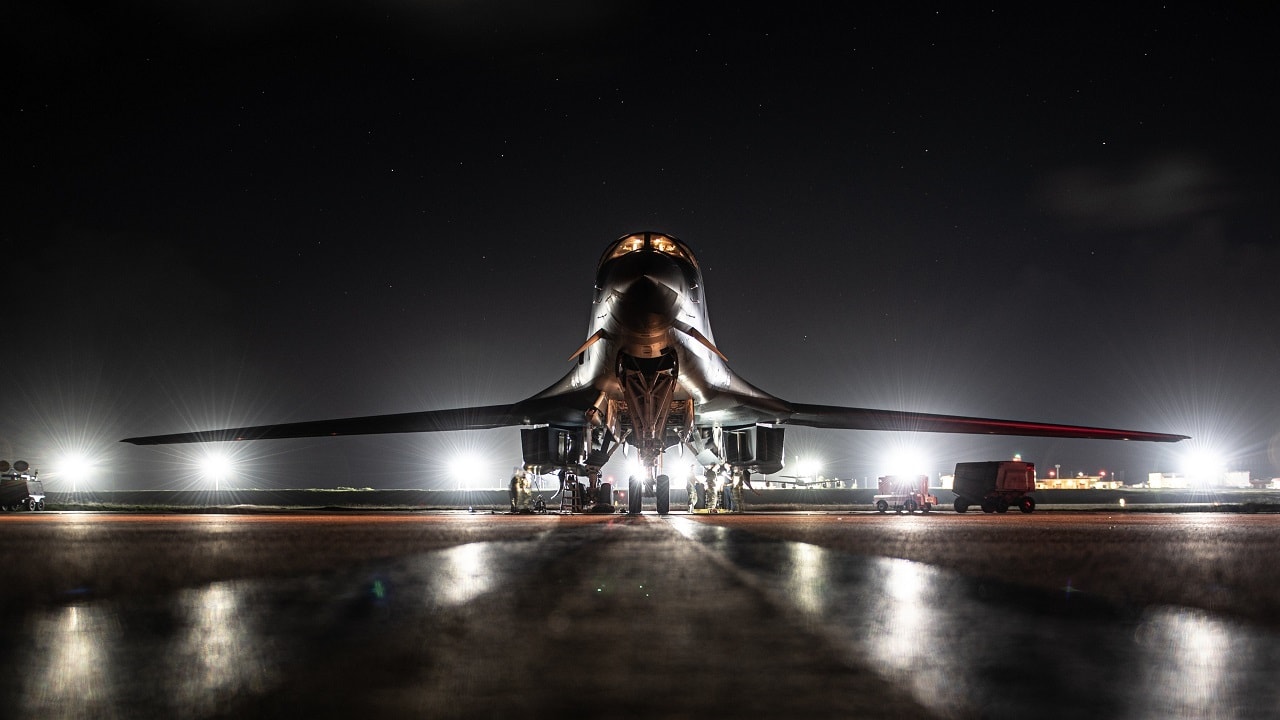Key Points and Summary: In a bold show of force, the US Air Force and Philippine Air Force conducted a joint aerial drill over the South China Sea on February 4, featuring B-1B bombers and FA-50 fighters.
-The exercise signals growing military cooperation amid China’s aggressive territorial claims and harassment of Filipino vessels.
-As the Philippines boosts defense spending and strengthens ties with Washington, the US aims to counter Beijing’s anti-access/area denial strategy.
-With President Trump’s administration expected to further solidify military alliances in the region, joint drills like these could become a cornerstone of America’s evolving strategy against Chinese expansionism.
B-1B Bombers and FA-50s Over the South China Sea: A Warning to China?
In a clear message to China, the United States Air Force and the Philippine Air Force flew a joint mission that combined American bombers with Filipino fighter jets over the South China Sea on February 4.
The training mission featured B-1B Lancer bombers and FA-50s. The exercise sent a signal to China that the Philippines will not sit idly and watch China encroach on its Exclusive Economic Zone. China has conducted past actions that include “ramming, water cannon, and blockades” to intimidate the Philippines in a contest over China’s territorial claims in the region.
It’s a Fight for Territory
China has a territorial dispute with the Philippines over the Spratly Islands, the Scarborough Shoal, and the West Philippine Sea. There are extensive natural resources on these islands and reefs.
Tuesday’s action reinforces the ironclad ties between the United States and the Philippines. Manila hopes to ensure that China does not use military force in the South China Sea over the territories in question. The drill occurred over the Scarborough Shoal, which Xi Jinping believes belongs to the Chinese people.
China Attempts to Intimidate
In August 2024, a Chinese airplane dropped flares toward a Filipino airplane in a provocative move that Manila believed was extremely dangerous and uncalled for. In January, a large Chinese coast guard vessel patrolled to intimidate fishing boats near the Scarborough Shoal, some 77 nautical miles from the Philippines.
Washington and Manila Have an Answer
Two B-1B bombers and three FA-50s flew this week’s mission. The B-1B is a heavy long-range warplane that has also been sent to Guam recently. The FA-50 is a South Korean-made advanced warplane based on the T-50 training jet.
The B-1Bs fly out of Guam and are normally based at Ellsworth Air Force Base in South Dakota. They have been operating in the Indo-Pacific theater since January 15. The bombers have also flown with warplanes from South Korea and Japan.
The United States and the Philippines “flew in a joint air patrol and intercept exercise aimed to enhance our operational coordination, refine our tactical and operational strategies together, and maintain our air dominance and regional security in a free and open Indo-Pacific,” according to a US military statement.
Ironclad Allies Are Becoming Stronger
Both countries have a mutual defense treaty that is decades old. The US Air Force maintains that it works with the Philippine military to improve defense strategy, operational art, and tactics. Both countries wish to maintain freedom of maneuver in the South China Sea that has become a flash point. Manila believes that Beijing wishes to bully and violate the island nation’s sovereignty.
The Philippines Will Spend More on Its Military
Meanwhile, the Philippines are beefing up their defense posture. The government has agreed to a $35 billion military modernization plan. The United States supports the move and is looking to partner with the Philippines throughout President Donald Trump’s tenure. Secretary of State Marco Rubio conversed with his counterpart last month to cement Washington-Manila ties.
These combined exercises are likely to continue. The alliance between the two countries forms one arm of what I call the “Great Basin of Allies” in Southeast and Northeast Asia that can thwart the power of China and stand up to aggression from Xi Jinping’s military.

A B-1B Lancer from the 28th Air Expeditionary Wing (EW), maneuvers to receive fuel while on a bombing mission, in support of Operation ENDURING FREEDOM.
China likes to utilize anti-access/ area denial stratagems against the United States and its allies. That means Beijing is using ships, submarines, ballistic missiles, and airplanes to deny American access to waters and air space near China.
But two can play that game. The United States should also deny the Chinese access to coastal areas that belong to its allies. Flying bombers and fighters to contest China’s territorial claims is a show of force that can turn the tables against China. Look at it as an American and allied version of anti-access/area denial.
This will likely frustrate the Chinese as they realize they have few friends in the region while America works to shore up positive relationships with its partners. Another significant aspect of the Great Basin of Allies and US efforts at anti-access/ area denial is that it is relatively cost-effective. The US Air Force continually rotates fighter and bombers squadrons to Guam, and they can fly missions over the South China Sea with little expense save for fuel and maintenance.
This show of force is aimed to send a signal to Beijing that the Americans and their allies will not be scared by so-called “grey zone” tactics – actions that are threatening but are short of a shooting conflict – like releasing flares or sending ships into Exclusive Economic Zones.
Look for these combined drills to continue and the efforts at the US version of anti-access operations aimed at China to expand. This could be a winning formula for the Trump administration as it devises the US “strategy of denial” in East Asia. Trump has not articulated his views on the military situation in the region but that will change soon as he gets more of his national security team confirmed at the Department of Defense and Department of State.

U.S. Air Force maintainers from Ellsworth Air Force Base, South Dakota, work 24/7 servicing and inspecting the B-1B Lancer. They are maintainers within the 379th Air Expeditionary Wing’s 34th Expeditionary Aircraft Maintenance Unit (nicknamed “the backbone of the bone”) and provide hundreds of thousands of manpower hours during six month deployments to Al Udeid Air Base, Qatar. Maintainers comprise approximately a dozen different career specialties to ensure the aircraft flies and meets mission throughout the Middle East. The Lancer carries the largest conventional payload of guided and unguided weapons in the Air Force inventory.
The United States and its allies are aware of what China is doing, and they are ready to counteract it. More B-1B Lancer bombs could be flying close to China before you know it.
About the Author: Dr. Brent M. Eastwood
Brent M. Eastwood, PhD is the author of Don’t Turn Your Back On the World: a Conservative Foreign Policy and Humans, Machines, and Data: Future Trends in Warfare plus two other books. Brent was the founder and CEO of a tech firm that predicted world events using artificial intelligence. He served as a legislative fellow for US Senator Tim Scott and advised the senator on defense and foreign policy issues. He has taught at American University, George Washington University, and George Mason University. Brent is a former US Army Infantry officer. He can be followed on X @BMEastwood.

